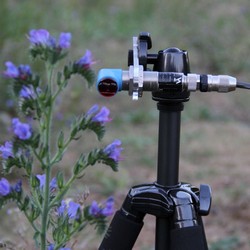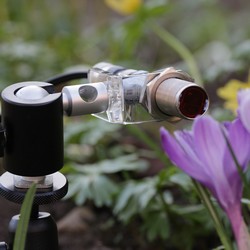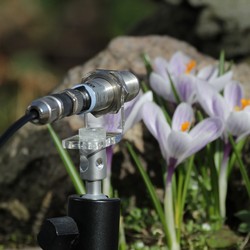Phase Trigger Sensors
The selection of the right sensor type depends on how the recognition of an event can be automatised, or how an object is best detected.
Photoelectric sensors can be used as a light barrier or as a sensing device. As long as light barriers are activated by an object blocking the light beam, sensing devices notice the vicinity of the object. Both sensor types can monitor distances from a few millimeters to several meters. Light barriers that work with reflected light require a reflector.
The types of light that can be used:
– Red light
– Infrared light
– Laser light
For a detailed description of the different types see below.
Most photoelectric sensors have a control element to adjust the reacting distance.
The reaction speed of the sensor model has to be taken into account especially for fast events to ensure that the object can be detected reliably.
The properties and capabilities of the sensors are listed in the data sheet for the respective sensor types.
The article number of the sensors is constructed as follows:
|Detection Method| – |Detection Range| – |Light Type|
Detection Method:
RL = Reflex
RR = Retro-Reflex
FO = Fork Sensor
Detection Range (in Centimeters):
0010 = 10 cm (3.9 inch)
0020 = 20 cm (7.9 inch)
0050 = 50 cm (19.7 inch)
0100 = 1 m (39.4 inch)
0600 = 6 m (19.7 feet)
1200 = 12 m (39.4 feet)
types of light:
R = Red light
I = Infrared light
L = Laser light
Example:
RR-0600-R = Retro-Reflex Sensor (incl. Reflector) with red light and range of 6m
RL-0050-I = R Reflex Sensor with infrared light and range of 50cm
The sensors and the reflectors have a mount with a ¼ -inch threaded hole that can be fastened to a commercially available stand.
Please note that laser light can damage the eyes when looking straight into the laser beam!
Please note that only sensors that are included or have been reordered should be connected to Phase Trigger. Other untested types can malfunction or damage the device!
Retro-Reflex Sensors
Retro-reflex sensors work with red light or laser light. The emitter and receiver are located inside the case and require a reflector to function. If the light beam is interrupted by an object between the sensor and the reflector the outlet switches. With the built-in polarisation filter, shiny objects such as mirrors and chrome-plated or reflecting surfaces can also be recognised reliably.

Reflex Sensors
The emitter and receiver are located inside the case. The light beam that is coming from the emitter is reflected off the surface of the object that is to be detected. The receiver captures a part of that light and processes it, using its built-in evaluation electronics, into a signal to switch. Light objects reflect the light better than dark ones and can therefore be detected at larger distances.

Fork Sensors
Fork sensors are emitters and receivers that are ordered to act as a barrier inside the same case. If the active light beam between emitter and receiver is interrupted, the outlet switches. By using visible laser light, it is very easy to target the sensor on the object. The fine light beam creates a speck of light with a very small diameter across the width of the fork.












